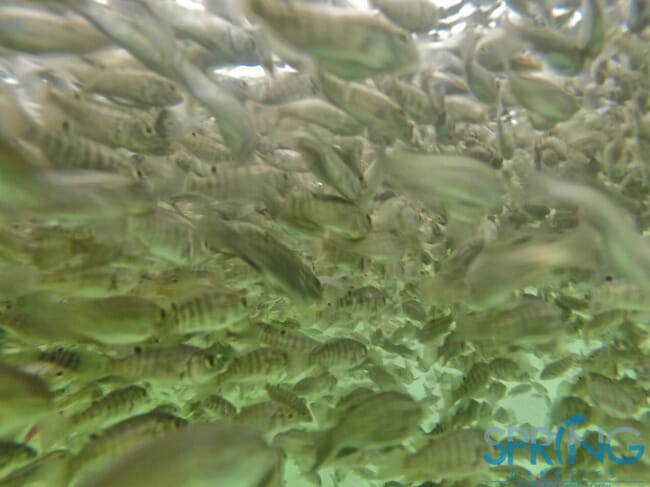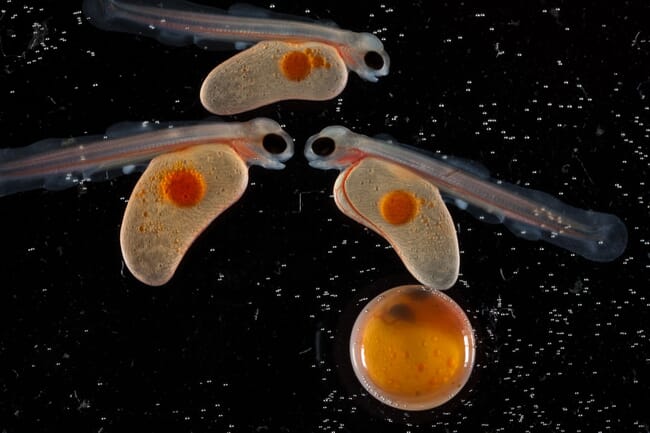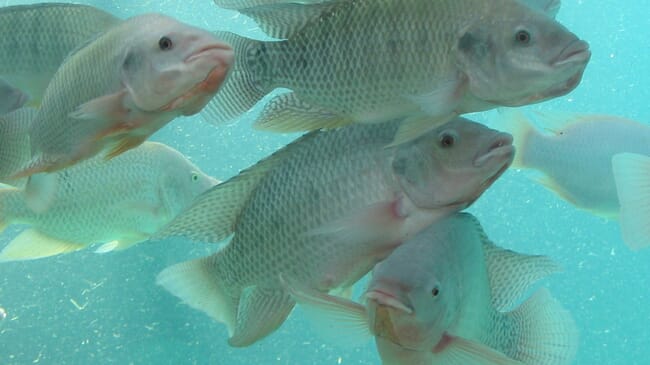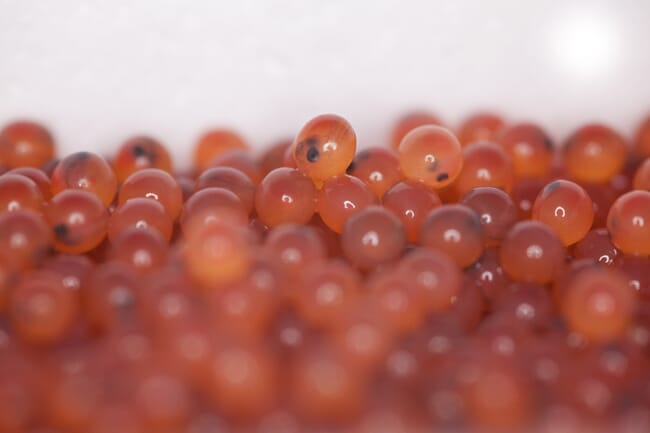What inspired you to join Benchmark?
During the past 30 years I have had the privilege of working on the development of genetics and breeding programmes in a number of species – including broiler chickens, pigs and salmon – with some of the major breeding companies. Successful breeding of farmed animals involves using available technology to adapt the animal to the farm environment. Over the time I have been involved the technology used in breeding has improved. Faster, more powerful computers allow better breeding decisions for more traits. Technology to measure new traits in the breeding candidates has improved. Genomic selection using information at DNA level to predict performance has been developed and applied.

Successful breeding programmes operate by implementing the available technology to breed strains which are better adapted to the farming environment – animals with better health and robustness – which leads to improvements in both animal welfare and economic performance. Benchmark has established itself to have a broad impact on the factors which support high levels of performance with capabilities in health management, nutrition solutions and genetics under a commitment to work to develop ethical approaches to improve the environment and economics of animal production. The Benchmark approach of using technology to improve the genetics of the animal and suitability of the farming environment attracted me since it fulfils a desire to develop animals and systems that complement each other, while achieving high welfare and performance.
Where are the group’s key bases for genetics/genomics work?
Benchmark is the newest player in aquaculture genetics. The group entered the global genetics market in 2014 when it purchased and merged two of the major players in salmon genetics – Bergen-based Salmobreed and Iceland-based Stofnfiskur – to form Benchmark Genetics. Shortly afterward, the genetic services company Akvaforsk Genetics Centre (AFGC), which provides genetics and genomics to breeding programmes in the major aquaculture species around the world, was purchased to provide a world-class platform for genetics improvement. The Miami-based tilapia breeder Spring Genetics and the Columbian shrimp breeding operation run by Genética Spring were also purchased to form a multi-species breeding company with significant global presence.

Who are the key players in the team and what investments have been made in this area in recent years?
The merger of five aquaculture breeding companies with global presence has brought together a strong team of qualified and experienced genetics and breeding specialists. There are geneticists with hands-on experience of breeding each of the species produced by Benchmark. These are supported by the team at AFGC which contains geneticists with many years of experience of developing and breeding a broad range of aquaculture species for companies around the world. AFGC, and the Salmobreed and Stofnfiskur salmon programmes, developed and applied genomic technology as genomic selection became possible over the last four years. Genomic selection in tilapia and shrimp is in the final stages of development after Benchmark increased investment in R&D following the purchase of Spring Genetics and Genética Spring. The Benchmark genetics team now contains specialists with strong track records in developing and implementing new genetics technology for aquaculture breeding programmes.
What are the key fish-related genetics/genomics projects Benchmark is currently working on?
The history of farm animal breeding shows that new traits and technologies are added incrementally to breeding programmes. The current priorities for development of breeding programmes involve implementation of genomic selection to traits which have conventionally been difficult to improve with genetics. These are predominantly in health – ie disease resistance. Each breeding programme has a priority list for the diseases to be targeted. The industry often talks about the quality of the animals where quality can be defined as “fitness for purpose”. Genomics is also being developed to improve these quality traits which have proved difficult breed for in the past.
Where does Benchmark stand when it comes to gene editing?
Benchmark has carefully considered the use of gene editing in breeding. As a global leader in fish genetics Benchmark aims to make farmed fish more fit for the farming environment. Benchmark will act as a guardian of the animals in its care, and breed for improved fitness in an ethical and sustainable way. Gene editing is recognised as a potential tool for breeding animals including fish with improved performance, health and welfare. This technology is considered to be a more precise and accurate method for producing genetic changes at the DNA level than previous methods (involving transgenesis – moving genes between species). The technology is used to make DNA sequence changes that could occur in natural populations of fish. Applying gene editing would involve making precise changes to the DNA sequence to alter genes affecting health and welfare. Benchmark will carry out research and investigate possible applications of this technology to improve health, welfare of the fish and food safety of the final product. The technology will only be implemented if it proves to be socially and legally acceptable, and where it can be shown to improve the efficiency, health and welfare of our animals.
How does gene editing differ from other forms of genetic manipulation?
The ability to move genes between species has been available for over 20 years, but the original approaches were seen as blunt and unpredictable. Gene editing uses enzyme complexes discovered in bacteria to make precise, targeted changes in the DNA sequence and avoid moving genes between species. The genetic changes being made could occur during normal reproduction, but at a very low frequency. Gene editing can be used to generate favourable variants of genes controlling important traits, without having to test many thousands of individuals, or having to take numerous generations to cross favourable variants into commercial populations. Gene editing can be used to change only the sequence of interest in a commercial strain, avoiding the problem caused by variants of other genes linked to the target gene which area incorporated when the favourable variant is crossed into a commercial strain. Additionally, gene editing could be used to incorporate favourable variants of several genes simultaneously. Traditional methods relying on discovering favourable mutations in several genes at low frequency would be much slower and less efficient.

Have you been inspired by other gene editing projects in particular?
The technology has moved very quickly since discovery of gene editing complexes. The use of gene editing to treat or cure diseases caused by single genes in humans is likely to cause a revolution in human medicine, provided medical science can identify the DNA sequences involved, and delivery systems can be developed.
The discovery in 2008 and use of a viral resistance gene in salmon – IPN QTL – a major gene accounting for over 80% of the genetic variation in resistance to infectious pancreatic necrosis (IPN) showed that single mutations can have large effects on disease resistance of individuals and populations. The breeding of IPN-resistant salmon strains and the uptake of these by the market using IPN QTL shows that if we can identify similar genes for other diseases, then gene editing can be used to quickly and effectively generate individuals with the altered sequence to create resistant strains.
The demonstration that gene editing can be used to generate pigs resistant to PRRS virus by editing the gene for virus receptors was a wake-up call. The generation of hornless cattle using gene editing illustrates that the technology is broader than development of disease resistant strains. There are published papers showing experimental application of gene editing in commercial fish species confirming that the technology will be applicable in fish breeding.
These projects suggest that the technology will be available before we have the regulatory systems in place to control inappropriate use. Forward-looking breeding companies should investigate and develop proposals to use gene editing to improve health and welfare and be ready to apply these when the regulatory systems are in place.

Why have you targeted ISA resistance to kick-off your work in gene editing?
Infectious salmon anaemia (ISA) is a major, global problem for salmon producers. The vaccines are not 100 percent effective. The virus is related to influenza viruses which may mutate and regularly causes major new outbreaks in other species. There is a stamping out policy, with whole pens / farms being slaughtered when positives are identified. Conventional genomic selection approaches would take many generations to develop a resistant strain. But if a major gene could be identified, and edited to produce resistance then this would be a significant step forward in the control of this disease. In Benchmark we have extensive data on resistance / susceptibility in our Salmobreed breeding programme. Research collaborators in the Roslin Institute and the University of Aberdeen discussed ISA resistance genetics with us and together with other collaborators in UK, Norway and Europe prepared a proposal to share information and develop an approach to use gene editing to produce ISA-resistant salmon.
The political climate – both in Norway and the UK - appears to be increasingly favourable towards gene editing. What timescale do expect for it to be more widely adopted?
The food we eat should be produced using systems that are acceptable to consumers and regulators . The debate on GMO farmed animals is extensive but has so far only resulted in one example of GMO animals being licenced for production – Aquabounty’s AquaAdvantage salmon. The debate regarding gene editing seems to be more favourable, due to the precision of the technology, and acceptance that the gene edits would be indistinguishable from naturally occurring genetic variation. A number of countries seem to be moving toward a position where gene editing will be permitted to produce variants that improve the health and welfare of farmed animals. I would hope that the regulating authorities will quickly consider the technology being developed and establish a mechanism to authorise development and production of gene edited strains with improved health and welfare.
What are the key factors behind the genetics division being among Benchmark's top performers last year?
The year saw us increase our sales of salmon eggs (by both volumes and price); and increased sale of lumpfish and the generation of fresh income from new partnership agreements.

In the longer term we are experiencing increasing tilapia broodstock and fingerling sales – supported by implementation of genetics and genomics programmes - and the increased uptake of robust strains of shrimp bred for improved disease resistance.
What areas of research do you intend to target for gene editing projects in the near future?
In the same way as we have prioritised traits for conventional genetic improvement, we have considered the possibilities of gene editing and prioritised the approaches based on the needs of the animals and the industry. Disease resistance is, and will continue to be, a target for genetic improvement including gene editing if permitted. Gene editing is highly suitable for traits – such as disease resistance – where small genetic changes have a big effect on the animal. As a result, the management of sterility and maturation may also be areas where gene editing can be used to provide genetic solutions to industry problems.




